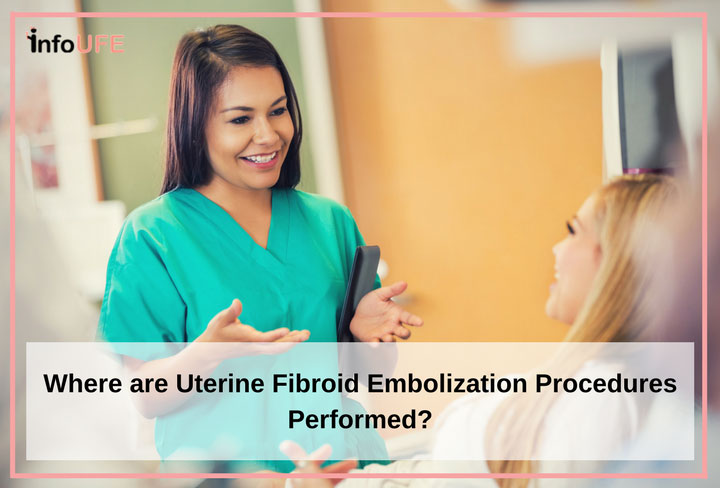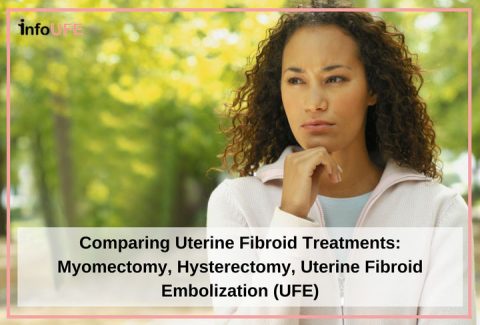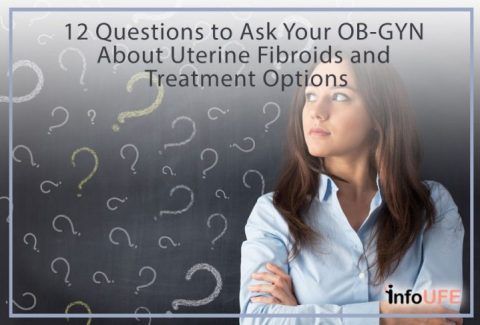
If you are considering uterine fibroid embolization (UFE), you’re probably interested in learning more about where this procedure can be performed. Uterine fibroids are non-cancerous tumors of the uterus. They are quite common, occurring in up to 40 – 60% of women by the age of 35.[i]
Fibroids need treatment when and if they cause significant symptoms, such as pain or heavy bleeding. UFE, like many interventional radiology procedures, can be performed at either an outpatient facility that performs same day treatments or at a hospital. The ability to have this procedure in an outpatient setting, avoiding the hospital admission process, is often one of several reasons many women may choose the minimally invasive procedure, UFE.
RELATED: Are You a Candidate for Uterine Fibroid Embolization?
Uterine Fibroid Embolization Procedure
To fully understand why UFE can be performed in either an outpatient center or in a hospital setting, it is helpful to know a little about what is involved with the procedure.
During UFE, an interventional radiologist places a small catheter in the femoral or radial artery. Using fluoroscopy, a type of x-ray, as guidance to visualize the catheter, the interventional radiologist positions the catheter in the arteries that provide the blood supply to the fibroids. Next, small beads are injected into these arteries, blocking blood flow to the fibroids. The blocked arteries will cause the fibroids to shrink over the next 3 to 6 months.[ii] UFE does not involve a large incision in the abdomen, like surgery does — instead only a small nick in the skin over the femoral or radial artery is made.
All of the components necessary to perform UFE safely and effectively, including an interventional radiologist, medical staff, and equipment such as catheters, x-ray technology, embolization beads, and monitoring equipment, are the same in both hospitals and state-of-the-art outpatient centers.
UFE in the Hospital
For years, UFE has been performed in hospitals. For some women, the hospital is still the appropriate place to have the procedure performed. Often the hospital is chosen if a woman has significant medical issues and requires monitoring by nurses and physicians for at least the first night after the procedure. If you have the UFE procedure in a hospital, you should plan to stay in the hospital overnight.
UFE in an Outpatient Center
Today, UFE procedures performed in outpatient centers are common, convenient and most importantly, safe and effective. An outpatient center is a building that is not within a hospital. The procedure itself will be performed in the same manner as in a hospital with the same safety checks, but the post-procedure experience can be quite different from a hospital-based procedure.
If you have UFE in an outpatient center, you will recover in a recovery room after the procedure, where nurses and your physician will be able to monitor you. When your physician determines you are ready to leave, you’ll be able to go home.[iii] You will need to have someone drive you home and stay with you for the first 24 hours after your procedure, but you will be able to sleep in your own bed on that first night.
While there are many benefits of uterine fibroid embolization, Not all women will be candidates for it in an outpatient center. Women with a history of heart attack, stroke, lung disease, or other major medical conditions that impact risk, may need to have the procedure performed at a hospital-based facility for more advanced monitoring, where they can be evaluated by nurses and physicians overnight.
The decision to have UFE at a hospital or an outpatient setting depends upon your medical history and risks. If you think the uterine fibroid embolization procedure might be the best way to treat your uterine fibroids, make an appointment to discuss UFE with an interventional radiologist to review your medical history and goals.
Sources:
i Zimmermann, A., Bernuit, D., Gerlinger, C., Schaefers, M., & Geppert, K. (2012). Prevalence, symptoms and management of uterine fibroids: An international internet-based survey of 21,746 women. BMC Women’s Health, 12, 6-6.
ii Torre, A., et al., Uterine artery embolization for severe symptomatic fibroids: effects on fertility and symptoms. Hum Reprod, 2014. 29(3): p. 490-501.
iii http://www.emedicinehealth.com/outpatient_surgery/article_em.htm#outpatient_surgery_introduction


